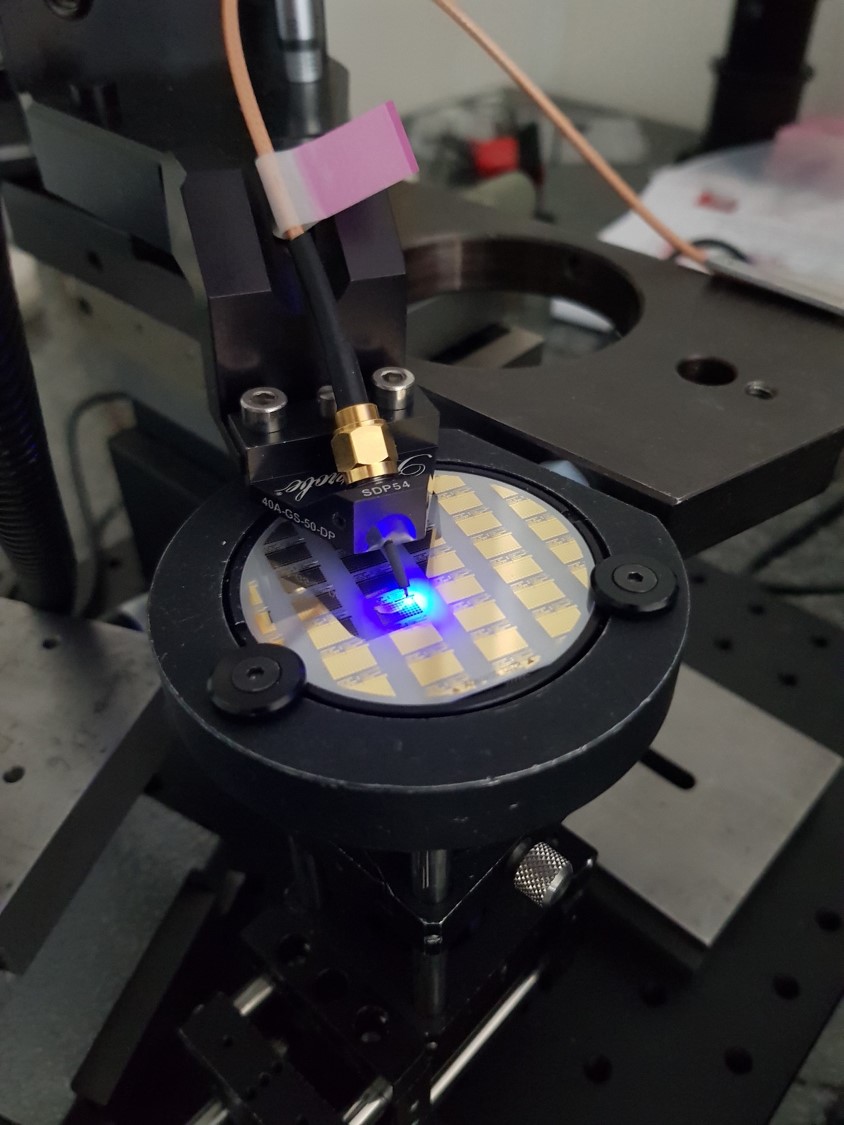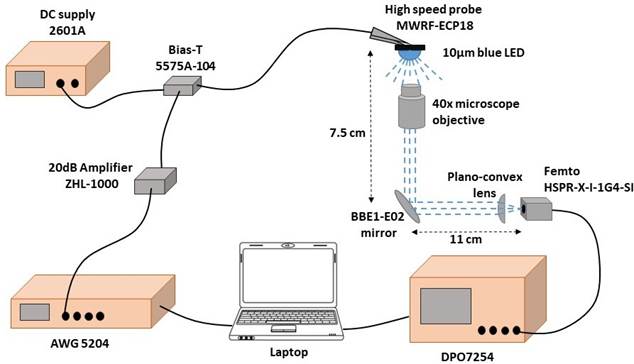French research institute CEA-Leti announced that its researchers have broken the throughput world record of 5.1 Gbps in visible light communications (VLC) using a single GaN blue Micro LED. Their data transmission rate of 7.7 Gbps achieved with a 10 µm Micro LED marks another step toward commercialization and widespread use of LiFi communication.

(Image: CEA-Leti)
VLC, or LiFi (light fidelity), is an emerging wireless communication system that offers an alternative or a complementary technology to radio frequency (RF) systems such as WiFi and 5G. It is considered to be a promising technology for security-related applications because light propagation can be confined to a room with no information leakage, as opposed to WiFi communication, which penetrates walls. LiFi also holds promise for ultra-highspeed data transmission in environments where RF emissions are controlled, like hospitals, schools, and airplanes.
Single Micro LED communications offer an ultra-high data-transmission rate for a variety of opportunities for new applications. These include industrial wireless high-speed links in demanding environments such as assembly lines and data centers, and contact-less connectors, or chip-to-chip communication. But their weak optical power limits their applications to short-range communications. In contrast, matrices of thousands of Micro LEDs contain higher optical powers than open mid- and long-range applications. However, preserving the bandwidth of each Micro LED within a matrix requires that each signal has to be brought as close as possible to the micro-optical source.
Exciting Potential for Mass-Market Applications
CEA-Leti’s expertise in the Micro LED epitaxial process produces Micro LEDs as small as 10 µm. The smaller the emissive area of the LED, the higher the communication bandwidth – 1.8 GHz in the institute’s single-blue Micro LED project. The team also produced an advanced multi-carrier modulation combined with digital signal processing. This high-spectrum-efficiency waveform was transmitted by the single LED and was received on a high-speed photodetector and demodulated using a direct sampling oscilloscope.
CEA-Leti scientist noted that LiFi application will still require a standardization process and has a potential to be included in the downlink of 5G-NR to bring additional bandwidth. Preserving the bandwidth of each Micro LED within a matrix requires that each signal is generated as close as possible to the micro-optical source.

(Image: CEA-Leti)
“To meet this challenge, we expect to hybridize the Micro LED matrix onto another matrix of CMOS drivers: one simple CMOS driver will pilot one Micro LED,” said Benoit Miscopein, a CEA-Leti researcher. “This will also enable the additional feature of piloting each Micro LED pixel independently, and that allows new types of digital-to-optical waveforms that could eliminate the need for digital-to-analog converters commonly used in the conventional ‘analogue’ implementations of LiFi.”













